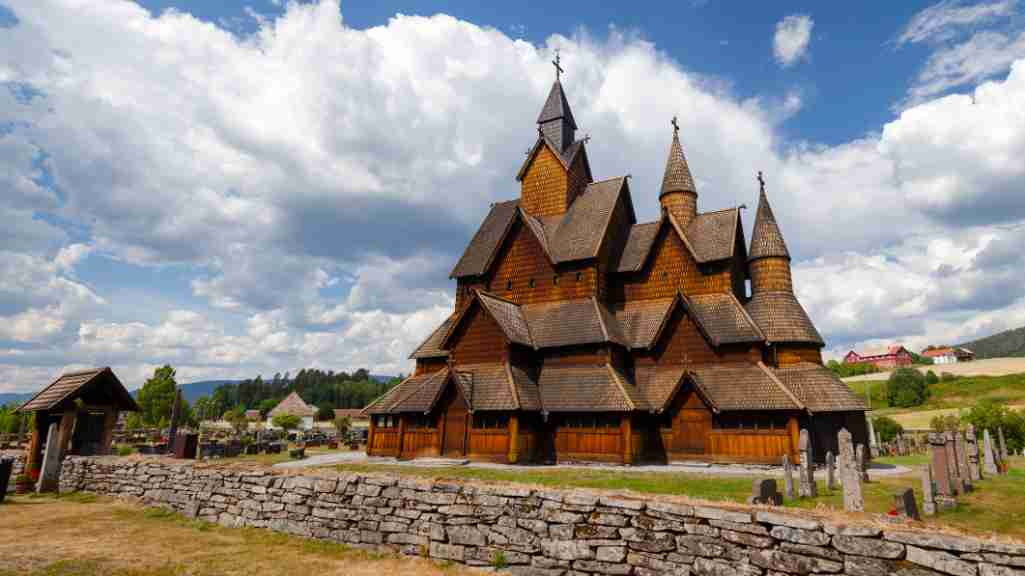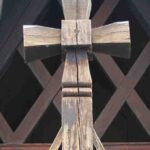Norway’s stave churches stand as architectural marvels, embodying the country’s rich cultural heritage and religious history. These unique wooden structures, dating back centuries, continue to captivate the imagination of visitors, including Norwegian Americans seeking a deeper connection to their ancestral homeland. In this article, we delve into the enchanting world of Norway’s stave churches, exploring their historical significance, exquisite craftsmanship, and the efforts undertaken to preserve these remarkable architectural gems for future generations.
- A Testament to the Past: Norway’s stave churches serve as tangible links to the nation’s past. Built during the Middle Ages, these structures hold stories of Viking traditions, Christian conversion, and the fusion of architectural influences from across Europe. Exploring these churches allows Norwegian Americans to connect with the historical tapestry of their ancestors.
- The Unique Stave Church Construction: Stave churches are characterized by their wooden construction, using vertical posts (staves) as the primary structural element. Intricate joinery techniques without the use of nails or screws contribute to their distinctive charm. Norwegian Americans marvel at the craftsmanship and attention to detail that went into creating these intricate wooden masterpieces.
- Cultural Symbolism and Mythology: Stave churches often feature intricate carvings, symbolic ornaments, and intricate dragon heads, which hold deep cultural and mythological significance. These architectural details provide a window into the folklore, mythology, and spiritual beliefs of medieval Norway, captivating the imagination of Norwegian Americans.
- Geographic Diversity: Norway’s stave churches are scattered across the country, each with its own unique charm and architectural style. From the iconic Borgund Stave Church in Lærdal to the picturesque Heddal Stave Church in Notodden, Norwegian Americans have the opportunity to explore the diverse regional variations of these architectural treasures.
- Preservation Efforts: Preservation organizations and cultural institutions in Norway work diligently to protect and restore stave churches, ensuring their longevity for future generations. Norwegian Americans who visit these churches actively contribute to the preservation efforts by supporting and raising awareness about the importance of these architectural gems.
- Rediscovering Ancestral Connections: For Norwegian Americans tracing their family roots to specific regions in Norway, visiting the stave churches in those areas provides a profound sense of connection. Standing within the hallowed halls where their ancestors once worshiped offers a deeply personal and emotional experience, strengthening their ties to their ancestral heritage.
- Architectural Marvels in Natural Settings: Many stave churches are nestled amidst Norway’s stunning natural landscapes, enhancing their allure. Norwegian Americans have the opportunity to appreciate not only the architectural beauty of these churches but also the serene surroundings of majestic mountains, fjords, and verdant valleys that create a perfect backdrop for these historic structures.
- Captivating Cultural Events: Stave churches often serve as venues for cultural events, concerts, and traditional ceremonies. Norwegian Americans attending these events not only witness the timeless beauty of the churches but also immerse themselves in the living traditions and vibrant cultural celebrations of Norway.
- Inspiring Creative Expression: The captivating beauty of stave churches has inspired artists, writers, and musicians throughout history. Norwegian Americans visiting these architectural wonders often find themselves inspired to create art, write poetry, or compose music, allowing the ancient spirit of the churches to ignite their own creative expressions.
- Spiritual Reflection: For Norwegian Americans seeking moments of spiritual reflection and tranquility, stave churches offer a sanctuary of peace. The sacred ambiance, dimly lit interiors, and hushed whispers provide a space for contemplation and introspection, fostering a sense of inner connection and serenity.
Conclusion:
Norway’s stave churches stand as guardians of architectural gems, preserving the rich history and cultural heritage of the country. For Norwegian Americans, these magnificent wooden structures offer a profound connection to their ancestral roots, unlocking stories of the past and igniting a sense of wonder and awe. Exploring the stave churches allows Norwegian Americans to appreciate the remarkable craftsmanship, delve into cultural symbolism, and witness the ongoing efforts to preserve these architectural marvels. The journey to discover Norway’s stave churches becomes a personal pilgrimage, deepening the appreciation for the architectural and cultural legacy that continues to inspire and captivate Norwegian Americans and visitors alike.





















The light typeface you are using is very difficult for my 80-year-old eyes to read. Wide up, you guys!